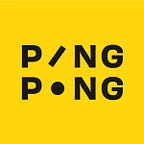Navigating data design in Healthcare
This article is in reference to this project.
“The future of design is inclusive design.” As someone who has always tried to imbibe this in their work, I find this incredibly challenging. The attempt to design for an alien audience is one of the hardest (and rewarding) things I have had to incorporate within my work.
Designing reports are usually seen as the unglamorous world of graphic design. But it is something I have slowly come to love. A combination of strong layouts, typesetting, decoding data and making dry (yes, I went there) content look and read well- it’s a graphic designer’s dream and some very good publication practice.
APTN’S series of reports provided us an opportunity to do just that. Armed with above average Indesign skills and a penchant for reading research, we set out to work on a set of 5 reports and here is what we learnt:
Not everything can be solved with pretty visuals
Being visual communicators we often find ourselves gravitating towards illustration/ bright colours and heavy use of iconography. But what if the scope doesn’t allow you to do that? What if there is no need?
These reports were intended for policy makers and organisations in various Asian countries, who were purely interested in hard statistics and not ornamental design. The decision to let go of heavily decorated data (that made it terribly hard to read the stats) or very heavy imagery (that distracted from the main content) was a hard and an important part of our process.
Instead, use of colour coding, type hierarchy and layout consistency took centre stage, offering the reader a chance to understand the entire report just by skimming through it.
Same Same But Different
In a project where you have five reports talking about the same idea, it becomes a challenge to differentiate and still maintain consistency.
Could colour be a weapon of choice? How do we decide these colours? Each country report (Nepal, Indonesia, Thailand and Vietnam) had a colour assigned to it. This was based on their dominant flag colour. As Thailand and Indonesia had overlapping reds, a magenta was used for Thailand and red for Indonesia. This became a legend for data across the reports and helped read them better.
Judge a book by it’s cover
Since the inside of the reports were fairly content heavy and data centric, we saw an opportunity for visual scope in the cover design. We also made the deliberate decision of keeping it different from other reports the organisation publishes to make it truly stand out in an email or a link.
We came up with 3–4 ideas that revolved around the idea of healthcare in Asia. Patterns of symbols started to emerge in our mind maps and we settled on the ‘red cross’ being an effective symbol to represent healthcare.
Based on the inside content, the client settled on Option 2 and we decided to create a system of report covers that had maps of the corresponding countries made of red crosses. For extra visual gravitas, we decided to overlay it with topography textures and small crosses leveraging the only chance we had for a little visual play.
The regional report came with it’s own hurdle- A 29 word title. This cover deserved the type to be the hero and we used the same textures and colors in the background to connect it back to the country reports.
Room for more?
Each report was divided into four questions around health care that also served as subsections.
In one of our early iterations, we had presented a few abstract visuals for these questions. While they didn’t make it to the final publication, APTN decided to release these as a part of their digital campaign.
We had a lot of fun brainstorming these otherwise abstract concepts and coming up with metaphors for each. These ranged from doing basic research on symbology and some of them were tough to crack as symbols can mean different things to different people.
The four selected were the ones below and we went ahead and even created simple animations to make the ideas come alive even better.
Resources that helped us during the project
- Indesign Secrets: https://indesignsecrets.libsyn.com/
- Baseline Grid: https://www.youtube.com/watch?v=zeRoe6zwdfI&t=587s
- Beautiful infographics: https://informationisbeautiful.net/
- Types of data: https://datavizproject.com/
- Find fonts for your projects: https://wordmark.it/
